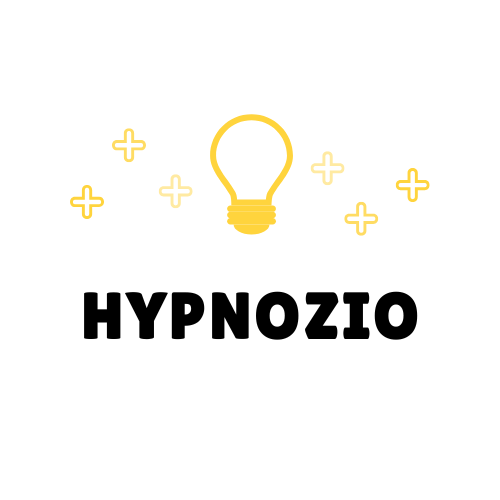Managing time can feel like trying to catch a greased pig for anyone, but for those with ADHD, it often resembles a circus act gone wrong. Juggling tasks, deadlines, and distractions can turn even the simplest of days into a chaotic whirlwind. But fear not! There’s a treasure trove of ADHD time management tools designed to help regain control and bring some semblance of order to the delightful chaos of life.
ADHD Time Management Tools
Individuals with ADHD often experience challenges in time management due to inherent difficulties in focus, organization, and impulse control. Distractions frequently derail attention, making it hard to prioritize tasks effectively. This can result in procrastination, missed deadlines, and stress.
Time management revolves around the ability to break tasks into manageable steps and set clear priorities. Effective strategies cater to the specific needs of those with ADHD. These tools may incorporate visual aids, timers, or digital planners that promote structure and routine.
Creating a structured environment enhances focus and reduces distractions. Using color-coded calendars helps visualize deadlines and appointments. Adding visual reminders or sticky notes can reinforce task prioritization.
Establishing a routine plays a vital role in minimizing chaos. Regularly scheduled activities improve predictability and enhance the ability to manage time. Allocating specific time blocks for tasks allows for dedicated focus without interruptions.
Integrating technology can also support time management. Task management apps provide reminders, allowing users to stay on track. Audio cues or gentle notifications help maintain attention on ongoing projects.
Engaging in self-monitoring can increase awareness of time spent on tasks. Reflecting on productivity and adjusting as necessary leads to improved time management skills. Continuous practice empowers individuals with ADHD to develop a personalized approach to managing their time effectively.
Understanding ADHD and Time Management

ADHD presents unique challenges in time management. Utilizing effective tools can significantly improve organizational skills and productivity.
Digital Tools and Apps
Task management apps, such as Todoist and Trello, streamline project organization. Visual reminders within these platforms make it easier to prioritize tasks. Timers and alarms, like Focus@Will and Be Focused, support sustained attention by breaking work into manageable sessions. Calendar apps, including Google Calendar, offer color-coded scheduling, enhancing visibility of upcoming deadlines. Many apps integrate notifications that reinforce routines and set clear expectations, promoting effective time management.
Traditional Tools and Techniques
Physical planners provide tangible structure, allowing for daily and weekly overviews of tasks. Sticky notes serve as visual prompts, helping to keep priorities visible. A color-coded calendar on a wall can enhance daily organization, reinforcing important deadlines and events. Using timers, like traditional kitchen timers, encourages focused work sessions. Regularly scheduled breaks can prevent burnout and maintain consistently high productivity. These straightforward, traditional tools help create an environment conducive to effective time management for individuals with ADHD.
Creating a Personalized Time Management System
Creating a personalized time management system for individuals with ADHD involves several critical components. Effective strategies enhance focus and minimize chaos in daily routines.
Setting Goals and Priorities
Setting specific, achievable goals is essential. Goals provide direction for task completion. Prioritizing tasks ensures focus remains on important activities. Using the SMART criteria–Specific, Measurable, Achievable, Relevant, Time-bound–can clarify objectives. This method aids in breaking larger tasks into smaller, manageable steps. For instance, if tackling a project, identifying milestones and deadlines fosters a sense of accomplishment. Regular review of goals enables adjustments based on progress, maintaining engagement and motivation.
Establishing Routines and Schedules
Establishing a consistent routine significantly boosts productivity. Daily schedules provide predictability, minimizing distractions. Incorporating visual calendars enhances awareness of upcoming commitments. Using color codes for different types of tasks can simplify task identification. Mapping out specific times for work, breaks, and recreational activities ensures balanced days. Scheduled reminders from digital tools keep individuals on track, reinforcing accountability. Flexibility within the routine accommodates unexpected events while maintaining overall structure. Regular assessments of routine effectiveness allow for tweaks, ensuring sustainable engagement in managing time efficiently.
Strategies for Effective Use of Time Management Tools
ADHD presents unique time management challenges, but employing specific strategies enhances the efficacy of these tools.
Managing Distractions
Identifying distractions is vital for effective time management. Create an organized workspace to minimize interruptions. Utilizing timers assists in maintaining focus, while setting specific work periods promotes task completion. Practicing mindfulness techniques can also improve concentration. Setting boundaries around technology usage helps limit distractions from notifications and social media. Additionally, using noise-canceling headphones can block out background noise. Regular breaks ensure mental refreshment, which aids sustained attention. By implementing these strategies, individuals with ADHD can navigate their time tools more effectively.
Staying Motivated and Accountable
Establishing clear and realistic goals significantly boosts motivation. Creating a visual representation of progress, like a checklist or chart, increases engagement with tasks. Joining accountability groups or partnering with others for support promotes commitment to goals. Scheduling regular reviews enables individuals to adjust their strategies as needed. Applying the SMART criteria—specific, measurable, achievable, relevant, and time-bound—clarifies expectations. Using motivational reminders, such as quotes or notifications, serves as encouragement. Tracking accomplishments, even minor ones, reinforces a sense of achievement, sustaining enthusiasm for time management tasks.
Conclusion
Embracing ADHD time management tools can transform chaos into clarity. By integrating digital apps and traditional methods individuals can enhance their focus and organization. Establishing a personalized system tailored to unique needs fosters productivity and reduces overwhelm.
Regularly assessing routines and remaining flexible allows for adjustments that accommodate life’s unpredictability. Mindfulness techniques and clear goal-setting further support sustained engagement. With the right tools and strategies in place managing time effectively becomes not just achievable but empowering. Individuals equipped with these resources can navigate their daily tasks with confidence and purpose.





